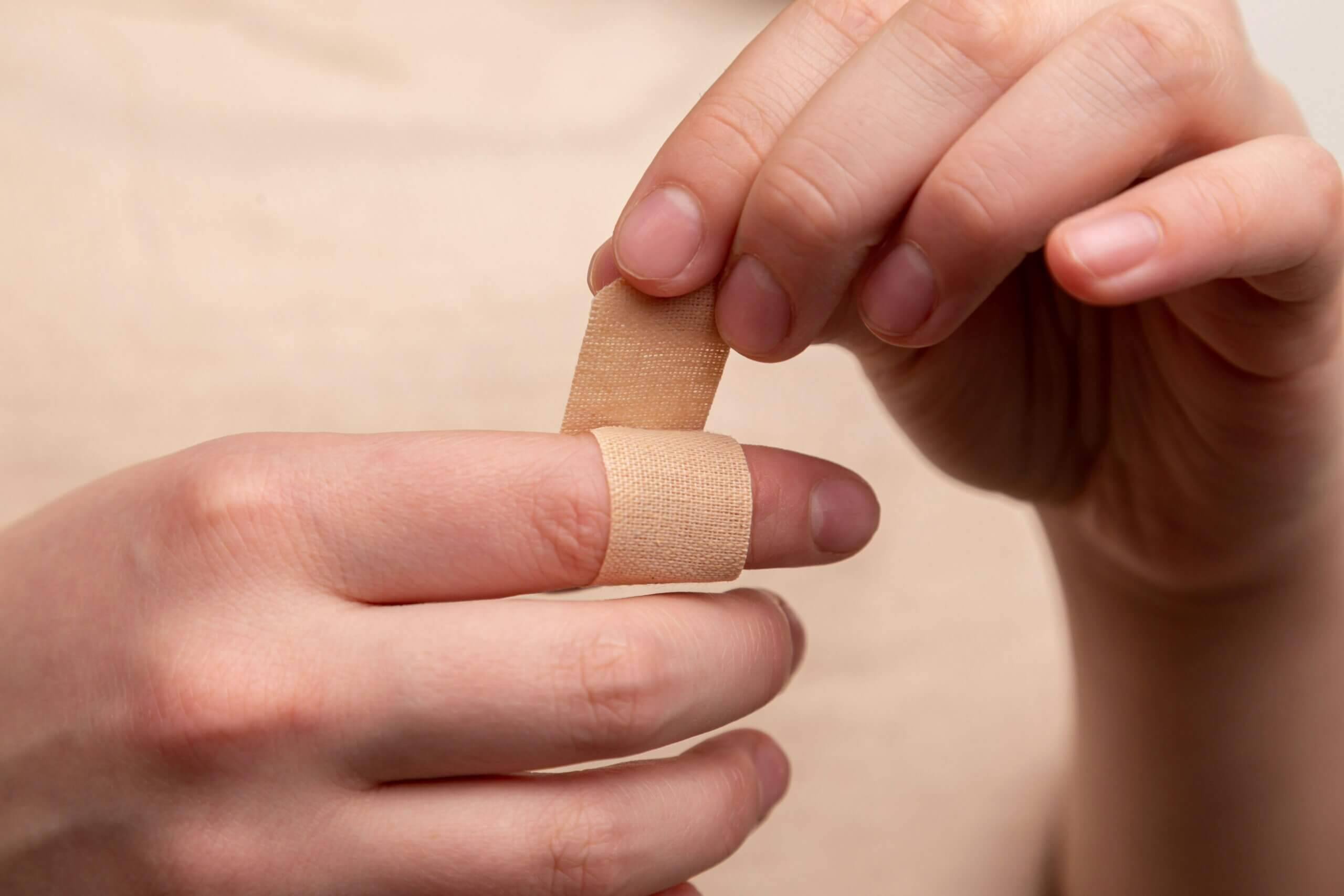Understanding the various surgical tape types ensures that you’re using the right product for the job. There are quite a few different types of medical tape, with differentiating factors including materials, adhesives, and features. In this guide, we’ll cover all of the options so you can make an informed purchase.
Medical tape uses can vary widely. They’re most commonly used for securing bandages and dressings in place, immobilizing joints, and attaching medical devices like IV lines, tubing, and catheters. Naturally, choosing the correct type of tape for each application is essential.
This guide will provide you with a general overview of the main surgical tape types that are available. However, each and every situation is unique, so it’s very important that you consult a health care professional if you’re unsure of which tape to use. Let’s begin!
Materials
First, let’s look at the main differentiator: the tape’s material.
1. Paper
Paper tapes are most commonly used to secure dressings and bandages directly to the skin. They’re also frequently used to secure medical devices.
Paper tapes are lightweight and breathable, and they adhere strongly while still being gentle and easy to remove—an ideal choice for people with fragile, sensitive, or at-risk skin. 3M Micropore tape is a very popular paper tape that’s used widely in homes and medical facilities.
While paper is one of the most versatile surgical tape types, it’s not always the best choice. For example, it might not be strong enough to secure a heavy bandage in place. High-quality paper tapes can be used on damp skin, but they adhere best to dry skin. Because paper tapes can be easily cut or torn to size, they’re an excellent choice for securing bandages in difficult areas.
2. Cloth

Compared to other surgical tape types, cloth tapes may not provide as much breathability, which may lead to irritation if the tape isn’t changed frequently. Some cloth tapes, such as 3M Durapore tape, are water resistant. Cloth tapes are conformable, so they give the user excellent control over the tightness of the dressing.
3. Plastic
Plastic tape is usually tougher and thicker than other types, so it’s often used for especially heavy dressings and medical devices. It’s easy to handle while wearing plastic gloves and is often used during surgical procedures. Transparent plastic tapes provide visibility for monitoring the healing progress of wounds.
Compared to other surgical tape types, plastic medical tape offers excellent adhesion. However, they may be difficult to remove, so they’re not always the best choice if you need to change the tape regularly or if you have gentle, sensitive, or at-risk skin.
Some plastic tapes, such as 3M Transpore plastic tape, are water resistant. Others, such as 3M Blenderm tape can be used as a waterproof barrier that protects dressings from external fluids, moisture, and contaminants, as well as medical gels and liquids.
4. Foam
When comfort is a priority, foam dressings are one of the best types of medical tape. The foam is thick and soft, providing a comfortable cushioning effect. When considering foam surgical tape types for challenging areas that move frequently, such as joints, you may want to choose an elastic foam tape, such as 3M Microfoam tape. The elastic offers multi-directional stretch so the bandage can easily conform and flex.
5. Silicone
Silicone tape is known for its consistent adhesion. It’s an excellent choice if you need tape that can hold dressings or medical devices in place for an extended period of time. For example, 3M Kind Removal silicone tape still provides the same level of adhesion strength even after 48 hours.
Adhesives
In addition to the tape’s material, you may want to consider the type of adhesive when choosing surgical tape types.
1. Acrylate
Acrylate adhesive provides firm attachment, but it’s also easy to remove without leaving residue behind. Acrylate is the most common type of adhesive, but it may not be appropriate for some medical tape uses.
2. Synthetic
Synthetic adhesives are ideal when you need stronger adhesion than acrylate can provide. However, the tape may be difficult to remove and may leave residue behind. It may not be as breathable as tapes with acrylate adhesive.
3. Non-Adhesive

Check Each Product’s Specifications
Not all types of medical tape are the same. It’s important to check each individual product to ensure that it meets your needs. For example, you may need to seek out a plastic tape that’s also porous and breathable. Or, you may need to find a paper tape that’s water resistant. When in doubt, talk to a health care professional.
Save on Quality Wound Care Products
Now that you have a better understanding of your options, shop our wide selection of wound care tapes and other wound care supplies. Our extensive inventory includes all of the different surgical tape types so you can find exactly what you need. We only stock high-quality products from trusted brands, like 3M, so shop with confidence.
If you have any questions about medical tape uses and types, contact us today. We’re known for our outstanding customer service, and we’ll be happy to assist you with your purchase.
Download the ADW Diabetes App, and enjoy easy and secure mobile shopping. Want to get your go-to discount diabetes supplies and health and wellness supplies delivered on a set schedule? Sign up for our Diabetic Coverage® Auto-Ship Program. Place your order today!







Leave A Comment